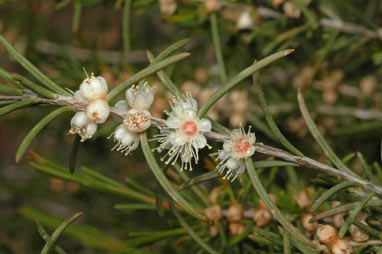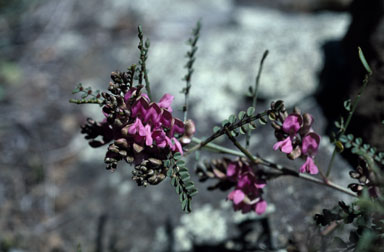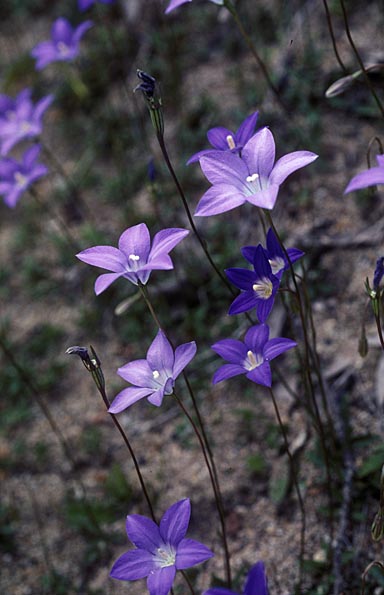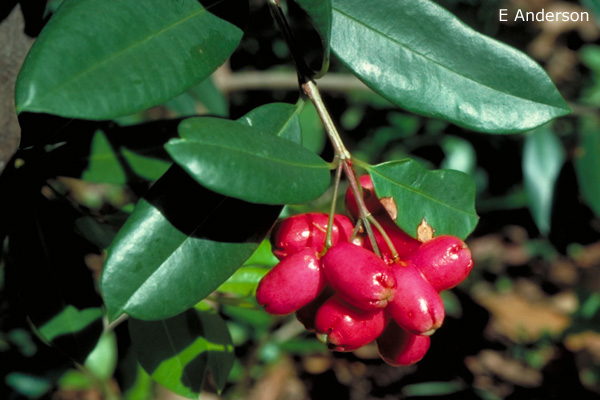Growing Friends Plant Sale - March 2017
You are here
The Growing Friends autumn sale will be held on Saturday 25 March. Included in this year’s autumn plant sale will be a selection of Acacia, Banksia, Correa, and Crowea. A list of all the plants for sale can be found here.
Some highlights of the sale will be:

Hypocalymma augustifolium Photo: Murray Fagg, Stocks Nursery, Harden
Hypocalymma augustifolium is a dense shrub to 1 meter high with flexible, thin weeping branches. It grows in full sun or dappled shade, sheltered from strong winds. Lighter soils are suitable as long as they are free from lime. Dainty flowers occur in spring and may be white, cream or pink. When bruised the leaves have a sweet and spicy perfume. The plant is attractive to bees and suitable as a cut flower. From early stages it is a good plan to give a mulch of leaf mould or compost around a young plant to keep the soil cool, along with light trimmings for bushy growth. With adequate water it then grows away quickly and flowers while young.

Indigofera adesmiifolia Photo: Murray Fagg, Woodstock National Reserve
Indigofera adesmiifolia is a slender shrub of the pea family. The sprays of purple pea-flowers occur in spring. It grows up to 1.5 meters high and does best in well-drained soils in semi-shade. It is tolerant of moderately heavy frosts and fixes nitrogen in the soil. Pruning from an early stage promotes a bushier form. The flowers are a pollen and nectar source for native insects.

Micrantheum hexandrum Photo: Murray Fagg, ANBG
Micrantheum hexandrum is a hardy shrub growing to 2.5 meters high by 1.2 meters across. It grows in most aspects in reasonably drained soil and tolerates heavy shade. Profuse scented cream flowers appear in spring. It has small dark green leaves with bronze to reddish new growth. Prune or clip for a neat hedge (similar to box). Frost hardy.

Persoonia chamaepitys Photo: Murray Fagg, ANBG
Persoonia chamaepitys is a slow growing but long-lived, prostrate plant 20cm in height with a 2 meter spread. It needs a well-drained acidic, light soil, in full sun or part shade. It has bright green foliage with bright yellow grevillea-like flowers in summer and may produce a subtle fragrance. Suitable for pots, rockeries, or edges of retaining walls. A. B. ‘Banjo' Patterson immortalized the Geebung in his famous poem ‘The Geebung Polo Club' and butcher shops used the bright green foliage in their displays until the mid-1900s. Aboriginal communities even used the bark of some Persoonia species to extract medicines for treating sore throats, colds and even sore eyes.

Wahlenbergia gloriosa Photo: Murray Fagg, Near Cabramurra, Kosciuszko National Park, NSW
Wahlenbergia gloriosa (floral emblem of ACT) is a small perennial, frost hardy, ground cover. It grows in full sun to part shade in well-drained soil. As the plant is very shallow rooted, the soil should be kept moist but not water-logged and well-drained soil is essential. It bears large, dark blue flowers in summer and is an outstanding plant for rockeries with ample water. It will sucker and spread, sometimes over large distances but does not have the potential to become a problem in the garden. It will also grow well in shallow pots and hanging baskets. The flowers are short-lived when cut but potted specimens in flower are suitable for indoor decoration in brightly lit positions.


Syzgium australe Photo: A Lyne, ANBG Syzgium australe Photo: E Anderson
For those with a large garden, Syzgium australe (lilly pilly) is a small to medium tree often to over 18 meters but often less in cultivation. It has rounded, bright glossy green leaves and bears white, fluffy flowers followed by large, fleshy red fruits in profusion in summer. The fruits are edible and are often made into jams. They can also be eaten fresh and have a crisp, refreshing texture:

